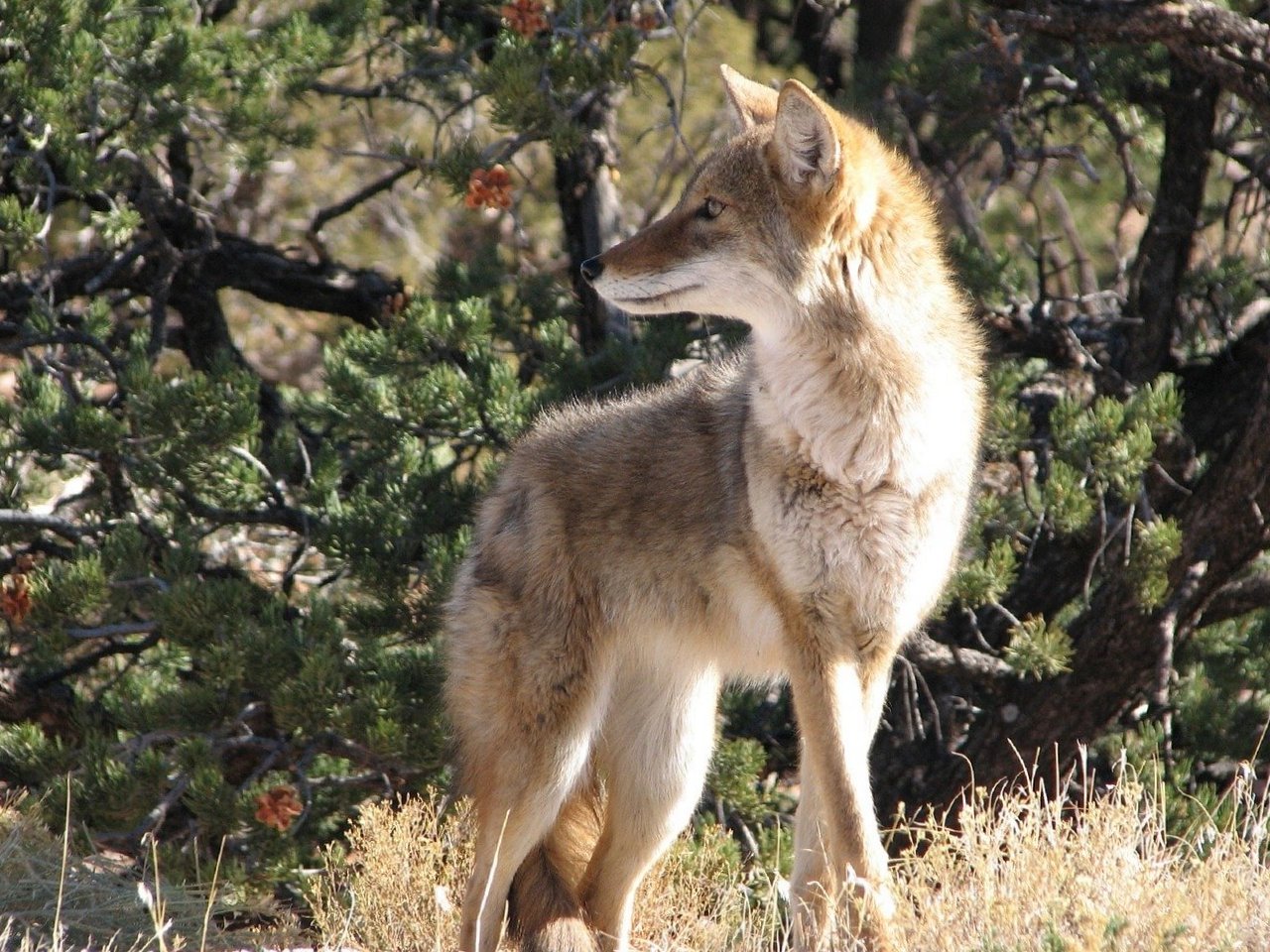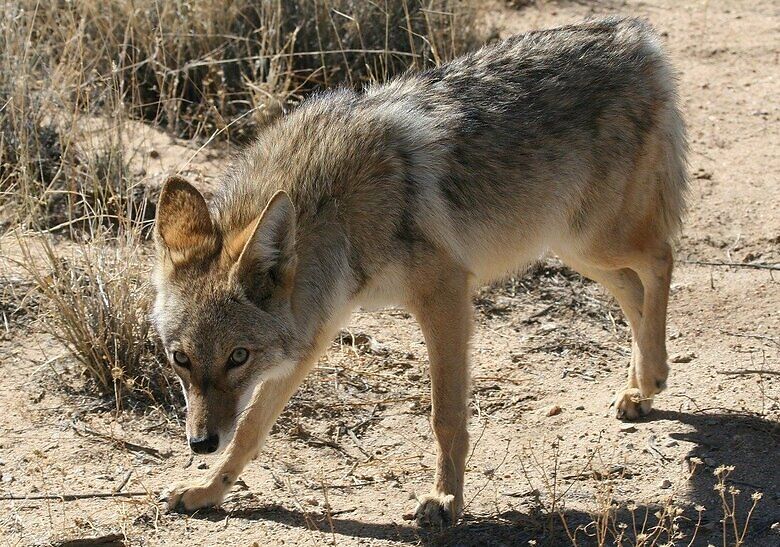About Nuisance Coyotes
Coyotes are one of the most common canine species in North America. These opportunistic hunters are usually thought of as pests, especially in areas with large human populations. The animal is also characterized as a “trickster” in many Native American tales, and this behavior has been proven time and time again. They are known to kill and eat a wide range of domestic animals including dogs, cats, chickens, and other small farm animals. They can even be dangerous to humans in some cases. Want to know what to do about these nuisance creatures? Keep reading for the full scoop.

Biology
History
The coyote is a widespread canine species across North America. Coyotes compete directly with wolf species for food and territory and quickly expanded into former wolf territory as wolf species declined over the 1900s.
The coyote is now found across the entire United States. Coyotes can even be found as far south as Panama and as far north as Alaska in the west and Newfoundland in the east.
Diet
Coyotes are mainly carnivores, with about 90% of the typical coyote diet consisting of meat. They are known to eat a very wide variety of animals including deer, rabbits, small rodents like squirrels, birds, lizards, snakes, fish, and many more. Despite this heavy reliance on meat, the coyote is actually an omnivore and is known to also eat fruits, vegetables, grasses, and grains.
Hunting
Coyotes typically hunt alone, but they will occasionally band together in order to take down larger prey. When hunting in packs, some reports say that these animals are able to take down prey weighing more than 400 pounds.
Communicating with Sounds
Coyotes will often vocalize by making howling or yipping sounds. They will often howl or yip to mark territory, but they mainly use urine to designate territory. They primarily vocalize to communicate with other coyotes, especially their family members.
Mating & Rearing
Speaking of family, coyotes will usually mate for life. Mating season for these animals is in late winter, with pups being born in early spring. A typical litter consists of six pups, which are born blind but grow quickly. The pups will usually remain with their parents for 6-8 months before venturing out on their own.
Dens
Coyotes live in dens which they often dig on their own, but they sometimes take advantage of deserted holes made by other critters. Pups are born and weaned inside these dens. Other than that, the den is typically only used for sleeping. Coyotes do not hibernate and will venture out of the den regularly even during the coldest months.
Problems Coyotes Cause
These days, coyotes have expanded their territory into urban and suburban areas across the United States. In doing so, the animal has become much more of a nuisance to humans. This wasn’t always the case though. Scientists have tracked coyote expansion over time and discovered that the species’ move into cities only really began after the 1990s. Today, coyotes can be found downtown in some of the largest American cities like Chicago and New York.
- One problem that humans encounter when it comes to coyotes is raided garbage cans, seed bags, pet food, and other easily accessible food sources in and around most homes. Coyotes are opportunistic and will gladly take advantage of an easy meal.
That said, the good news is that coyotes are actually quite skittish and generally shy away from humans when possible. It’s true to say that they are more scared of us than we are of them, so they try to avoid confrontation.
A recent study out of Cornell University examined coyote behavior in suburban regions and studied human-coyote interactions across the state of New York. The study found that, when living in a suburban area, coyotes still prefer to keep their dens and territories in more natural habitats outside of densely populated residential areas. Results also showed that coyotes actually prefer their typical prey to any human sources of food.
The study also found that, across the state of New York, the most commonly reported coyote issues were run-ins with pets. Unfortunately, dogs and cats do attract coyotes, and coyotes will attack these animals. The most common human-coyote incidents occur when humans try to intervene in these situations.
- Though it is rare, coyotes have been known to attack humans. The risk of an attack increases when humans feed coyotes, or if they allow coyotes to approach them or their pets. Urban coyotes that become too comfortable with humans are also a risk. Most sources report that in the last 30 years, there have been approximately 160 confirmed coyote attacks on humans in the United States. Most of these attacks took place in the Los Angeles County area. Of all 160 attacks, only two were fatal.

Prevention
There are a few things you can do to decrease your risk of coyote interactions and keep these animals away from your property.
- Make sure your property is clean of any trash and food scraps. That said, coyotes are crafty and are often able to raid closed trash cans. Use a metal trash can and secure the lid with bungee cords.
- Keep your pets indoors when you can’t keep a close eye on them outside. If you let your pets roam free outdoors, this can attract coyotes to your property. It’s especially important to keep your pets indoors between dusk and dawn, as coyotes are more active during this time.
- Feed your pets indoors in order to keep pet food from attracting coyotes. If you must feed your pets outside, make sure to clean up well and take food and water bowls inside each night.
- Secure any farm animals you may have on your property. This is especially important for the smaller, more vulnerable animals like chickens. The easiest thing to do is keep your animals in pens and make sure these pens are well secured. Don’t let your animals roam in remote areas where you can’t keep an eye on them.
- Install high-quality fencing that is at least six feet high. Coyotes are experts at jumping and can easily get over anything lower than that. The best material is solid wood, but vinyl and metal will work too. Electric fences are also a useful deterrent.
- Clear your property of any possible coyote hiding spots like brush piles, large bushes, fallen trees, and low-growth vegetation.
Professional Removal Tactics
Trapping
The primary non-lethal removal tactic that professional wildlife control experts will use to remove coyotes from your property is trapping. Trapping is not as simple as it sounds. Remember that the coyote is known as the trickster – these animals are known to evade most traps. For this reason, you need a true expert to do trapping for you.
To be successful, coyote trappers often turn to the specialized techniques of fur trappers in order to trap coyotes. Experts are able to trap coyotes with ease, but you shouldn’t try it on your own.
Lethal Methods
There are also many removal experts who use lethal methods, but these come with a long list of risks and drawbacks that make them undesirable.
- It’s impossible to only target the offending animal (the coyote in this case) with lethal methods. In the worst case, poisons or snares might even harm your own pets or livestock.
- When these methods do find the right target, they are often inhumane and cause extended suffering for the animal.
For information on getting rid of coyotes, see Getting Rid of Coyotes.
